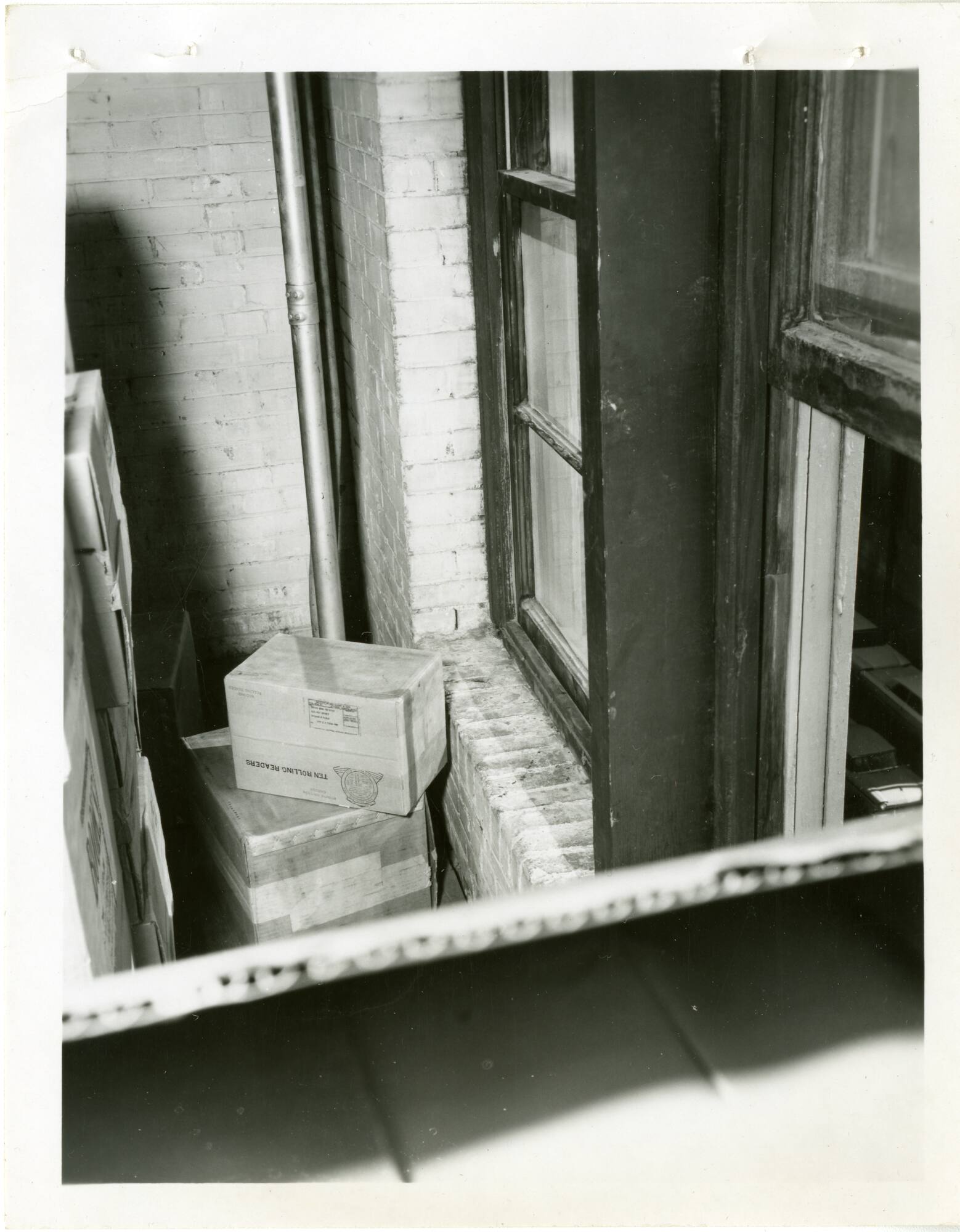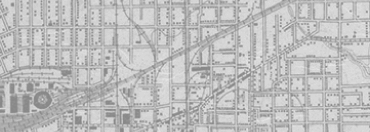


Back
Photo of the sniper's perch in the Texas School Book Depository building
Black and white photographic print of the sniper's perch in the southeast corner on the sixth floor of the Texas School Book Depository building. The photo was taken in November 1963 by the Federal Bureau of Investigation as evidence in the days following the assassination of President Kennedy. Two windows are on the right side of the photograph with stacks of cardboard boxes visible on the left side. There is a light-colored brick wall with some pipes and two stacked cardboard boxes in the center of the photograph. There is a blurry edge of a cardboard box in the lower foreground of the photograph.
Photo of the sniper's perch in the Texas School Book Depository building
November 1963
Paper
5 x 4 in. (12.7 x 10.2 cm)
Nat Pinkston Collection/The Sixth Floor Museum at Dealey Plaza
2003.006.0002
According to the Warren Commission, the standard box size in the sniper’s perch was approximately 18 by 12 by 14 inches. On average, these book boxes weighed around fifty-five pounds. There were also two smaller "Rolling Readers" boxes stacked just in front of the open southeast corner window where a rifle may have been rested at the time of the shooting. These two smaller boxes measured approximately 12 by 9 by 8 inches. Although most people assume that the smaller boxes contained school books, there were actually no books inside. The Warren Commission noted that the "Rolling Readers" cartons nearest the brick window ledge "contained, instead of books, light blocks used as reading aids. They [the boxes] could be easily adjusted and were still solid enough to serve as a gun rest." In fact, the "Rolling Readers" were part of a linguistic blocks series produced by Scott Foresman and Company educational publishers (who were best known for their famous Dick and Jane series for young readers). Here is a description of the "Rolling Readers" from a 1970 education report: "Though not a reading series, the linguistic blocks could be described as a tool to aid in teaching the following aspects of linguistics: the alphabetic principle, major spelling patterns and basic sentence patterns. The plastic blocks are arranged in a series of five sets, including these ‘Rolling Readers,’ one set for consonants, and one for vowels." -- Stephen Fagin, Curator
This FBI photographic print was in the personal collection of retired agent Nat A. Pinkston (1915-2011). Pinkston was a Dallas attorney prior to joining the Federal Bureau of Investigation. He retired from the Dallas FBI office in 1967 after twenty-eight years of service. Pinkston was involved in the local assassination investigation, notably tracing ownership of the Mannlicher-Carcano found in the Depository to employee Lee Harvey Oswald. He was also dispatched to the Texas School Book Depository on December 2, 1963, after Lee Harvey Oswald's clipboard was discovered in the northwest corner of the sixth floor near where the rifle had been found shortly after the assassination. -- Stephen Fagin, Curator

Photo of the sniper's perch in the Texas School Book Depository building
Black and white photographic print of the sniper's perch in the southeast corner on the sixth floor of the Texas School Book Depository building. The photo was taken in November 1963 by the Federal Bureau of Investigation as evidence in the days following the assassination of President Kennedy. Two windows are on the right side of the photograph with stacks of cardboard boxes visible on the left side. There is a light-colored brick wall with some pipes and two stacked cardboard boxes in the center of the photograph. There is a blurry edge of a cardboard box in the lower foreground of the photograph.
Photo of the sniper's perch in the Texas School Book Depository building
November 1963
Sniper's perch
Windows
Boxes
Photographs
Investigations
Evidence
Pinkston, Nat A.
Texas School Book Depository
Federal Bureau of Investigation
Dallas
Paper
5 x 4 in. (12.7 x 10.2 cm)
Nat Pinkston Collection/The Sixth Floor Museum at Dealey Plaza
2003.006.0002
According to the Warren Commission, the standard box size in the sniper’s perch was approximately 18 by 12 by 14 inches. On average, these book boxes weighed around fifty-five pounds. There were also two smaller "Rolling Readers" boxes stacked just in front of the open southeast corner window where a rifle may have been rested at the time of the shooting. These two smaller boxes measured approximately 12 by 9 by 8 inches. Although most people assume that the smaller boxes contained school books, there were actually no books inside. The Warren Commission noted that the "Rolling Readers" cartons nearest the brick window ledge "contained, instead of books, light blocks used as reading aids. They [the boxes] could be easily adjusted and were still solid enough to serve as a gun rest." In fact, the "Rolling Readers" were part of a linguistic blocks series produced by Scott Foresman and Company educational publishers (who were best known for their famous Dick and Jane series for young readers). Here is a description of the "Rolling Readers" from a 1970 education report: "Though not a reading series, the linguistic blocks could be described as a tool to aid in teaching the following aspects of linguistics: the alphabetic principle, major spelling patterns and basic sentence patterns. The plastic blocks are arranged in a series of five sets, including these ‘Rolling Readers,’ one set for consonants, and one for vowels." -- Stephen Fagin, Curator
This FBI photographic print was in the personal collection of retired agent Nat A. Pinkston (1915-2011). Pinkston was a Dallas attorney prior to joining the Federal Bureau of Investigation. He retired from the Dallas FBI office in 1967 after twenty-eight years of service. Pinkston was involved in the local assassination investigation, notably tracing ownership of the Mannlicher-Carcano found in the Depository to employee Lee Harvey Oswald. He was also dispatched to the Texas School Book Depository on December 2, 1963, after Lee Harvey Oswald's clipboard was discovered in the northwest corner of the sixth floor near where the rifle had been found shortly after the assassination. -- Stephen Fagin, Curator









